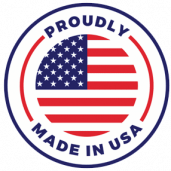| Approval Status | Prior Year Models: BV110B/200 |
Prior Year Models: BV250/300/350/400 |
Current Models: BV450/500 |
Current Models: BV425/475 |
|---|---|---|---|---|
| Black Bear Approved by SIBBG | Yes | Yes | Yes | N/A |
| Grizzly Bear Approved by IGBC | No | Yes | Yes | Yes |
In October 2003, the BearVault® was Conditionally Certified by the SIBBG. Production began in November, and after a full year of field use by many backpackers, the Conditional Certification was changed to fully approved by the SIBBG.
Since 2004, we have made a few design changes and have also been grizzly bear approved by the Interagency Grizzly Bear Committee. This involves a similar one-hour test in the hands of a mighty Grizzly.



In October 2003, the BearVault was Conditionally Certified by the SIBBG. Production began in November, and just one year later, after a full year of field use by many backpackers, the Conditional Certification was changed to fully approved by the SIBBG.
Since 2004, BearVault has been grizzly bear approved by the Interagency Grizzly Bear Committee. The IGBC certification test provides great insight into how seriously bear safety products and organizations take the efficacy of bear safety products. The IGBC program is the only bear-resistant product testing and certification program in the United States that is recognized and endorsed by bear experts.
The intent of IGBC testing program is to prevent ineffective products from being placed into use. If a product appears on the list of IGBC-approved bear-resistant products, it means that the commercially available product has met minimum standards related to the effort that must be expended by grizzly bears to access the container’s contents.
Visual Inspection of Product Components: Latches, hinges, lids, coverings, openings, etc. Anything that might allow a bear to gain entry by breaking, bending, tearing, biting, or pulling with its claws or teeth will be visually inspected.
Live Grizzly Bear Test: The live-bear test utilizes captive grizzly bears at an IGBC-approved facility. Currently, the Grizzly & Wolf Discovery Center in West Yellowstone, Montana is the only facility approved for this purpose by the IGBC.
Test Conditions:
Reproduced with the expressed permission of the Interagency Grizzly Bear Committee.
During the autumn and winter of 2002/2003, BearVault made several prototypes which were impact-tested by the Sierra Interagency Black Bear Group (SIBBG). By May 2003, we had a canister that was ready for the ultimate test: a trial stint with Fisher, the 560 pound black bear at the Folsom Zoo. Fisher, with his massive bulk and powerful jaws, had sent many designers back to the drawing board. It turned out, that is exactly what he did to this early BearVault design as well. The SIBBG required the canister to last one full hour – but after just 8 minutes, Fisher had torn into the canister, and claimed his tasty reward of meat, peanut butter and jelly.
Undeterred, we revised and strengthened the canister design, and in July 2003 we re-tested the improved canister with Fisher. After 24 hours, he gave up. Wanting to see how much punishment the canister could endure, it was then immediately put into the cage of another large black bear named Sequoia. After an additional 24 hours the canister was removed from her enclosure, still intact. The BearVault lasted 48 hours of abuse by two very large black bears, vastly exceeding the one hour requirement for certification.
There are many variables that could be responsible for a bear canister’s failed performance in the wild:
In an article about bear canister failure, based on real data collected from Yosemite National Park, it becomes clear that there are many different variables that contribute to canister success and failure. Andrew Skurka, in his article titled “Not Bear or Idiot Proof: Documented Canister Failures”, states the following:
“For every, one bear canister failure, there are several cases of bears obtaining food or scented items that were:
Bears everywhere are creative, motivated, and super curious creatures. Perhaps you have heard of the “Cliff Bear” of Yosemite – a bear that learned by accident that if a canister rolled off a cliff it would shatter into pieces below leaving all the treats scattered about to be gobbled up. The canisters that took the tumble cracked open regardless of the brand. They were also entirely irretrievable.
The Sierra Wild page on “Bear Essentials” provided some amusing albeit sobering titles based on various bear provision thievery and break-ins that we published below. You may find yourself both chuckling and shuddering at the same time, but this gives you a glimpse into the kind of investigative work we at BearVault® do as we continue our research and development to provide the most effective and practically useful equipment we can provide.